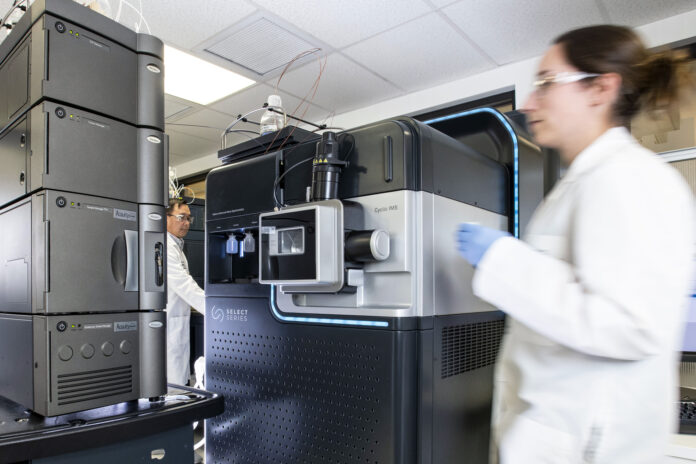Metabolomics aims at detecting and quantifying metabolites present in biological samples. Metabolites present in numerous study samples, along with different physical properties and abundance, pose significant challenges for identifying and quantifying metabolites. Over the decades, researchers and scientists have made substantial efforts to improve bioanalytical and computational techniques for metabolic studies. Liquid chromatography-mass spectrometry (LC-MS) is one such robust tool for quantitative and qualitative metabolic studies. LC-MS bioanalysis has hyphenated alternatives, such as LC-MS/ MS assays, offering solutions for different drug development studies, such as NAb assay development and drug impurity testing. The current article focuses on LC-MS/MS services for metabolic studies.
LC-MS services for metabolomics studies
Metabolomics generally includes identifying and quantifying small molecule metabolites. It helps understand biological and biochemical mechanisms in complex systems, providing a diagnostic aid to medical conditions and diseases.
Current metabolomics approaches include two complementary methods: targeted and untargeted. The targeted method analyzes metabolites associated with a specific metabolic pathway or compound. On the other hand, the untargeted method analyzes overall global metabolic changes in response to environmental, disease, or genetic influences. Generally, researchers employ an untargeted approach during hypothesis generation, while a targeted approach for definitive quantitative analysis.
Metabolomics has applications in diverse research fields, including biomarker discovery, integrative systems biology, environmental and biological stress studies, and functional genomics. Due to its inherent complexities, research requires multiple analytical tools to assess the full range of metabolites. Among these platforms, nuclear magnetic resonance spectroscopy, mass spectrometry, and Fourier transform infrared spectroscopy are commonly employed.
Mass spectrometry offers highly sensitive and selective quantitative analysis. It has several ionization techniques, such as API, ESI, APCI, and APPI, to analyze different classes of metabolites. ESI is preferred widely for studying unknown metabolites. Besides, employing mass analysis in tandem or hybrid systems can further enhance identification and quantification capacities of LC-MS systems. Today, researchers apply LC-MS/MS tandem systems for quantifying metabolites in the nanogram range in different biological matrices such as serum, plasma, and cellular media.
Combining liquid chromatography with mass spectrometry helps identify and quantify metabolites by allowing metabolite separation before detection and reducing sample complexity. Besides more advanced systems, such as high-performance liquid chromatography, is a versatile tool for separating compounds with a wide range of polarity. Today, LC systems combined with electrospray ionization MS units have become the preferred choice for detecting metabolites in biological study models. In this system, reverse-phase liquid chromatography can separate semi-polar compounds, while hydrophilic interaction liquid chromatography can work with polar compounds. Although normal-phase liquid chromatography can separate polar compounds, using nonpolar organic mobile phases is more suitable with APCI-MS systems instead of ESI-MS units.
Combining HPLC systems with MS detectors has several advantages, such as improved signal, reproducibility, and sensitivity by minimizing sample complexity and thus decreasing matrix interference during the ionization process. Besides, a good chromatography separation ensures higher quality MS data because of reduced background signal. Not to mention, recent technology in liquid chromatography, such as ultra-performance liquid chromatography and capillary monolithic chromatography has significantly improved peak resolution.









